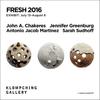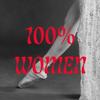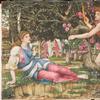Corning Museum of Glass to Host Exhibition Exploring Developments in Modern Austrian Glass Design
- CORNING, New York
- /
- November 16, 2017
The Corning Museum of Glass (CMoG) will be the first museum in the United States to present the exhibition Glass of the Architects: Vienna, 1900–1937, A cooperation of the MAK and LE STANZE DEL VETRO from June 23, 2018 to January 7, 2019. The exhibition will explore a transformative moment in Austrian design. Glass design of this period emerged from a confluence of ideas, individuals, and cultures and reflected a spirit of modernity. The exhibition will include a total of 172 works, 50 of which are from CMoG’s permanent collection and introduced to the presentation in Corning. At CMoG, the exhibition is curated by Assistant Curator Alexandra Ruggiero. At the MAK and LE STANZE DEL VETRO, the exhibition was curated by Rainald Franz, MAK Curator, Glass and Ceramics Collection.
“We are thrilled to partner with the MAK and LE STANZE DEL VETRO to present this groundbreaking exhibition in the U.S.," said Ruggiero. “We look forward to displaying objects from our own collection alongside the iconic works from the collections of the MAK and J. & L. Lobmeyr. While in Corning, the exhibition will also include select loans in other media from North American collections, complementing the glass on view and further shaping our visitors’ understanding of this important moment in Austrian design.”
At the turn of the 20th century in Europe, the term architect was applied to those who designed building structures, as well as those who designed all aspects of interior decoration. As these designers sought to establish a modern style in Austria, they took inspiration from nature and their regional traditions, as well as from international artistic styles and movements. Glass was a prized material in which to express their ideas. They built upon existing traditions of glassmaking by leveraging the existing network of design and technical schools, and relying on manufacturers, retailers, and exhibitions to promote and disseminate their ideas on a global scale. Leaders in the development of modern Austrian design whose work will be on view in the exhibition include: Josef Hoffmann (1870–1956), Koloman Moser (1868–1918), Otto Prutscher (1880–1949), Dagobert Peche (1887–1923), Michael Powolny (1871–1954), Vally (Valerie) Wieselthier (1895– 1945), Oswald Haerdtl (1899–1959), and Adolf Loos (1870–1933).
The objects on display will illustrate the immense variety of techniques and the varied aesthetics of Austrian glass during this period. For instance, Vase with Birds, decorated by the Glasfachshule Haida (Nový Bór), and Oswald Haerdtl’s Candy dishes, produced by J. & L. Lobmeyr, both have delicate appearances, but were produced in vastly different ways: the vase is enameled, while the decoration on the candy dish is provided by its skillfully executed form. The bronzit decoration of Urban Janke’s Jardinière captures the geometric, black and white patterns most closely associated with modern Austrian design. The stacked elements of Josef Hoffmann’s blue tableware set and the geometric form of Emanuel Josef Margold’s cut glass Lidded Vase are examples of architectonic motifs translated into glass design.
Glass was also a fixture in significant avant-garde exhibitions of this period, from the VIII Secession Exhibition in Vienna in 1900, to the Werkbund Exhibition in Cologne in 1914, in the Exposition internationale des Arts décoratifs et industriels modernes in Paris in 1925, and beyond. One of the highlights on view in the exhibition will be a mirrored room designed by Josef Hoffmann for the Austrian Pavilion at the 1937 Paris Exposition. Featuring reflective, mirrored-glass paneling comprising the walls, floor, and ceiling, glass light fixtures, and glass decorative elements, the room is a Gesamtkunstwerk—total work of art that illustrates beautifully how architects conceived glass as an ideal material to create harmonious, complete environments.
Designed by Annabelle Selldorf and Sara Lopergolo, of Selldorf Architects, in partnership with CMoG’s exhibition teams, the exhibit will incorporate digital technology to bring to life the architecture and exhibitions of the period, all of which had an extraordinary impact on the public’s perception of design during this era.
Glass of the Architects: Vienna, 1900–1937 is accompanied by a catalogue of the same title produced by the MAK and LE STANZE DEL VETRO. A new CMoG publication authored by Alexandra Ruggiero, will highlight objects of modern Austrian glass from the Museum’s permanent collection. New photography of these spectacular objects will provide tantalizing, close-up details.





















